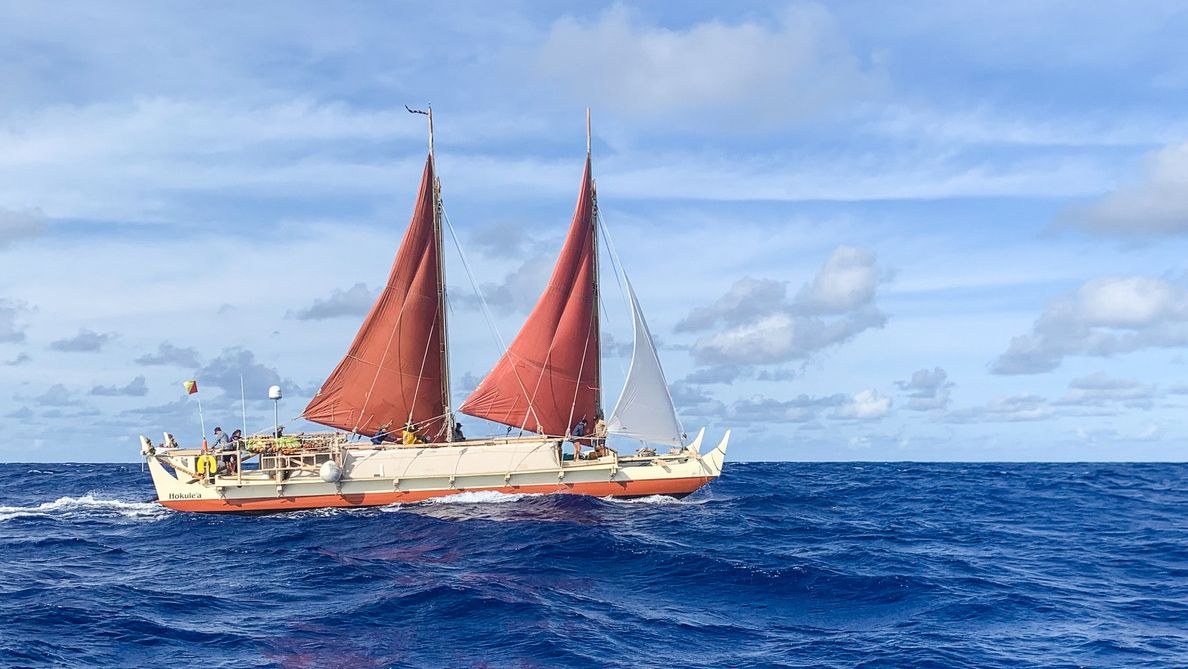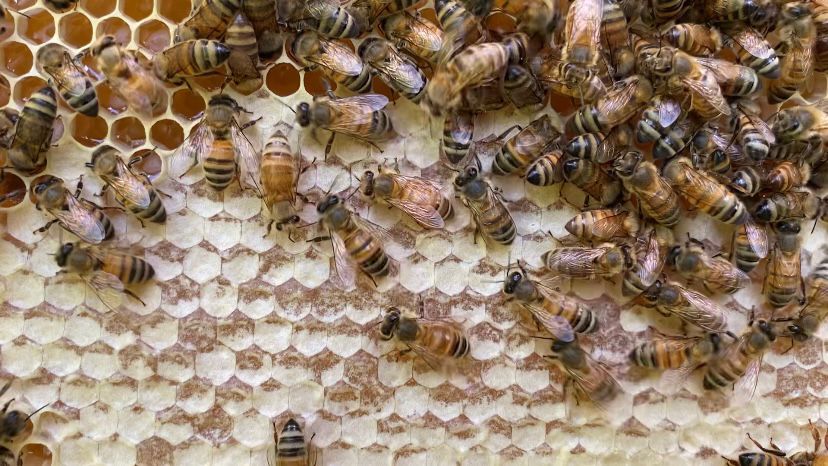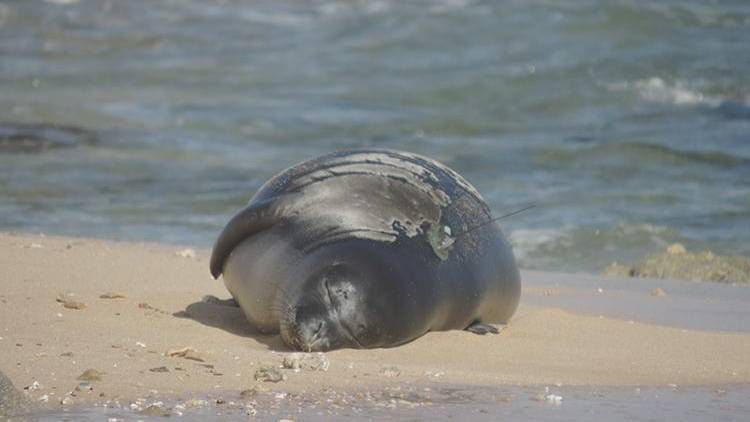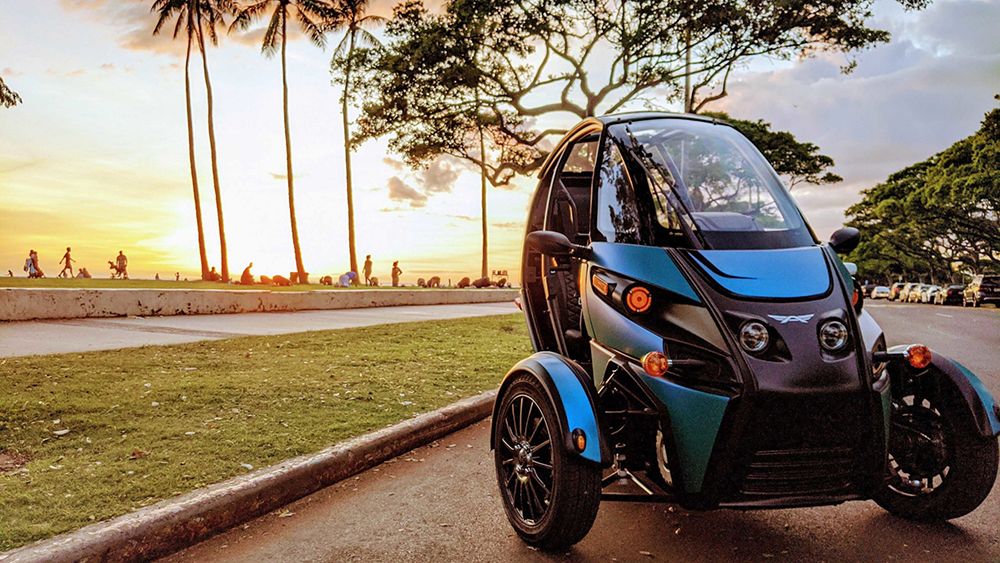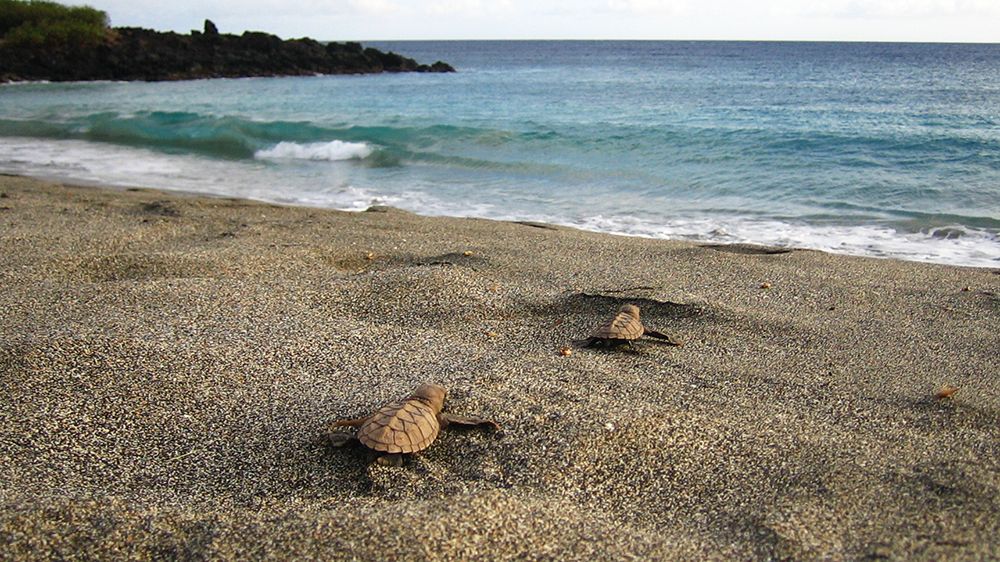The winds and stars have thus far given the Polynesian voyaging canoes Hokulea and Hikianalia a good start on the ancient sea road of Kealaikahiki to Hawaii’s ancestral homeland of Tahiti. After delays due to weather conditions, the much-anticipated Kealaikahiki Voyage launched from Hilo on April 18.
On Thursday, Hokulea navigator and captain Lehua Kamalu estimated the canoes were about 255 miles into their 2,500-mile-long course. Both canoes are expected to reach Tahiti in approximately 20 days, weather permitting.
The focus of the Kealaikahiki Voyage is on navigational training and cultural protocol for the next generation to prepare the crew and test the canoes before they embark on the Moananuiakea Voyage in 2023.
On Hokulea, Kamalu is the first woman to lead-captain and lead-navigate a canoe from Hawaii to Tahiti. Aboard Hikianalia, Kaniela Lyman-Mersereau is the captain in training with apprentice navigator Kaleo Wong. Like their ancestors before them, they are practicing the art and science of wayfinding incorporating the stars, sun, ocean swells and other signs of nature to navigate the open ocean.
Kealaikahiki (Ke-ala-i-kahiki, the route to Tahiti) is an ancestral sea road, a “heritage corridor,” that connects Hawaii and the Kahiki Homeland, according to the Kaiwakiloumoku Pacific Indigenous Institute website. The island of Kahoolawe is a geographic marker of the corridor on the Hawaii side; the Society Islands, the Tuamotu Archipelago and the Marquesas Islands are the geographic markers of the Kahiki (Tahiti) side of the corridor. This is the route that the ancestors of Native Hawaiians took when sailing between Tahiti and Hawaii.
A new addition this year is a digital platform that follows the voyage to Tahiti and back, and will do the same for next year’s Moananuiakea Voyage. Virtually connecting people of all ages around the world, Waa Honua (Canoe for the Earth) aims to inspire future navigators and motivate individuals to make better choices for the planet. The site will grow as Hokulea and Hikianalia move forward, connecting people along their journey.
The intent of this voyage is clear, as the next generation takes the lead guided by those before them. Similarly, during this Earth Day weekend, people young and old are taking positive action together to create a surging movement to better care for the Earth as it stands calf-deep in the effects of climate change.
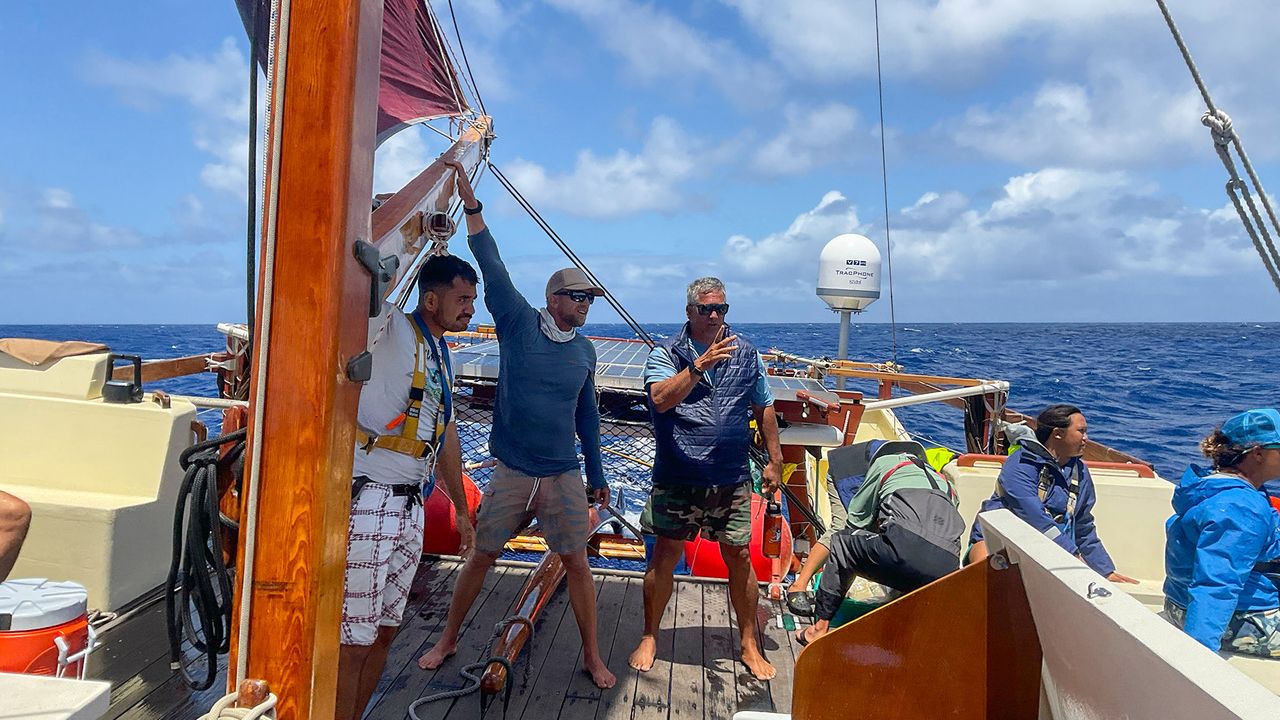
“The great navigators of the Pacific had a deep understanding of the systems of nature and how their vessels interacted with those systems, as well as the values needed to successfully voyage over long distances,” said Nainoa Thompson, pwo navigator and Polynesian Voyaging Society chief executive officer in a new release. “PVS voyages to perpetuate and deepen this knowledge, which is critical to protecting our planet. Our young crews are learning that deep connection, and so will anyone who voyages with them on Waa Honua.”
Designed for audiences of all ages, the platform features video stories, articles and educational resources focused on developing the “Navigator Mindset.” Highlights include navigation and crew updates as the canoes sail to and from Tahiti, and eventually, around the Pacific Ocean; stories about the genealogy of Hokulea, its founders and early voyages that sparked the Hawaiian cultural renaissance; navigational lessons, learning resources and games available on Kamehameha Schools’ new Holomoana website for teachers and students; and more. Currently in development for the site are virtual expeditions, live streams and moderated discussions.
Content will be produced by PVS; it will also include curated content from educational and research partners that include Kamehameha Schools, Arizona State University, University of Hawaii and Bishop Museum.
“Our hope is for waahonua.com to become a digital global hub that carries the critical cargo of our community’s values, lessons, and stories, and connects all the partners and the people who are part of our larger Malama Honua voyage and movement, no matter where they are around the world,” said Thompson.
“Connected by common values, the crew of the virtual canoe includes universities, schools, educators, scientists, explorers, storytellers, artists, elders, young leaders, policy makers, innovators, and anyone who has a gift for the planet,” he added. “As each partner steps on board, he, she, they make a promise to the earth. Everyone can be a navigator of their own voyage for the future of the earth.”
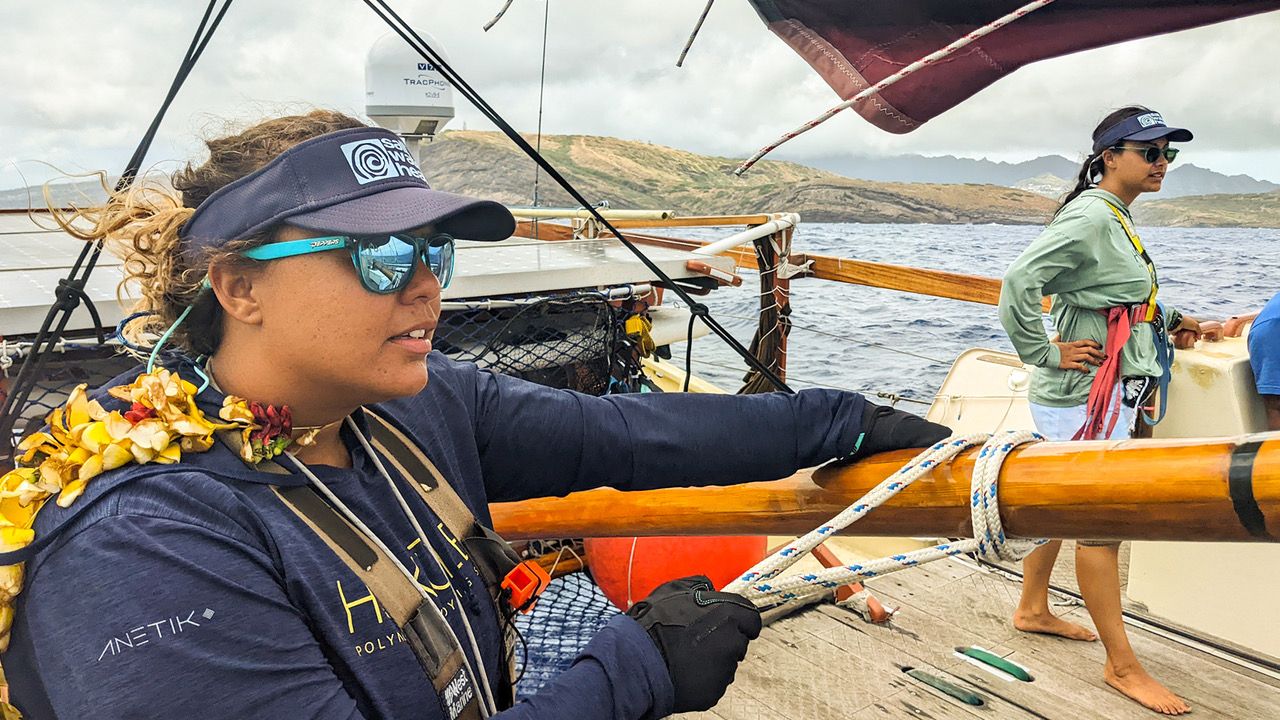
Another focus of the Kealaikahiki Voyage “is to enact the ancient voyaging protocol of sailing to the sacred navigational heiau of Taputapuatea in Raiatea, French Polynesia, to seek permission to launch a major voyage,” according to a release by the Polynesian Voyaging Society.
Once there, they will engage in formal ceremonies with Taputapuatea’s cultural elders to affirm the ancestral sea road and consecrate Hokulea and Hikianalia as “sacred vessels of heritage carrying the mana (spirit) of Polynesia throughout the vast Pacific on the Moananuiakea Voyage.”
Upon reaching French Polynesia, voyaging leaders will take part in the Blue Climate Summit, May 14-20, a high-level meeting to discuss ocean protection and climate change.
Hokulea and Hikianalia are scheduled to return to Oahu around June 15, 2022.
Sarah Yamanaka covers events, tourism and community news for Spectrum News Hawaii.





